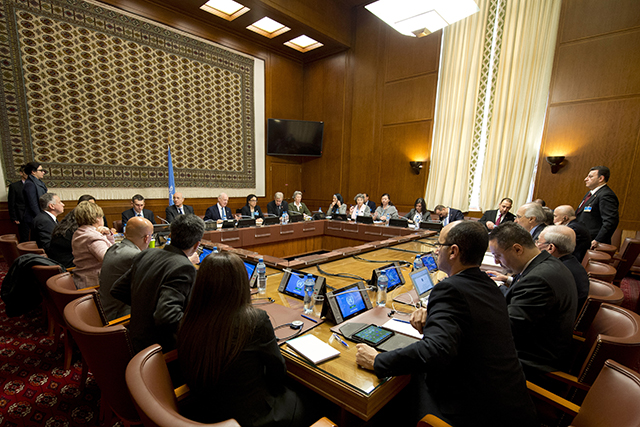Syria, Yemen, and Libya are clear cases of de-development via destruction and devastation. Each has its own inter-ethnic, tribal, historical, political, resource, and economic stresses that have contributed to its present astonishing violence. One could write a library of books about what brought each country to the state it is in now. There is no one-size-fits-all solution to the multitude of crises each faces.
Post-Conflict, Long-Term Needs
It may be that Syria, Yemen, and Libya will ultimately be divided into smaller countries. While this would be unfortunate, it may be an inevitable part of the region’s transition.
It also may take many years, if not decades, for these countries, whatever they end up being, to reach the point where the guns are silent. But silencing the guns will not necessarily bring stability and peace in the long run. If the underlying causes of the violence are not properly dealt with, these countries will endure recurring nightmares of destruction.

Indeed, if these countries are not developed and their people are not given realistic hopes and dreams for a better future, they will fall back into violence. Syria, Yemen, and Libya have shattered economies. Getting them back to a state from which they can grow with their people will involve massive injections of funds. Syria may need at least $500 billion, Yemen at least $250 billion, and Libya at least $200 billion. These amounts will need to be provided fairly quickly to stave off the demons of war and conflict, but not so quickly that the countries cannot absorb the funds and as a result fall into hyperinflation or worse.
Hard Infrastructure
This money will have to flow to productive efforts to repair, improve, and expand both hard and soft infrastructure. The hard infrastructure will be much easier. Repairing and making ports, airports, roads, rail networks, communications infrastructure, and financial infrastructure are mostly engineering and economic challenges. Creating a new rule of law, new work ethics, new societal views toward development and corruption, and new senses of how to work together are far more difficult than digging a channel for a port. Consequently, the development of a new soft infrastructure will likely take much longer. But one needs the other. Logically, the first step is to restore the hard infrastructure. This will not only supply people with employment, but the repaired hard infrastructure can help attract future investments and jobs.
Logically, the first step is to restore hard infrastructure. This will not only supply people with employment, but the repaired hard infrastructure can help attract future investments and jobs.
Getting people to work is one important aspect of improving their lives quickly. Building up labor-using industry, agriculture, and services to get Syrians, Yemenis, and Libyans back on their feet is thus essential. A focus on developing small to medium-sized repair and manufacturing industries staffed by locals to support re-development could bring people hope and training. It could also give them a sense of their role in the future of their country. Hence, these should not be make-work jobs, but jobs with dignity and promise. Housing will also need to be constructed in massive amounts. New and better water and energy systems must be built. New food production, distribution, and sales networks will need to be put in place – and so much more.
Soft Infrastructure
At the same time, serious efforts to develop the soft infrastructure within the cultural and other frameworks of the societies are crucial. Such efforts would include rebuilding legal and administrative frameworks to fit a program for human development and human security. This would involve training teachers, professors, lawyers, doctors, engineers, government administrators, and other professionals. It would also involve training the general population in what is needed to move forward as a country, and what their places will be. None of this will work if the cancer of corruption continues to permeate the governments. A significant part of the creation of the new soft infrastructure should therefore be the development of a system of checks and balances, a stronger and more equitable rule of law, and a sense of greater fairness. A lack in the development of fairness, like a lack in the development of an economy and jobs, could push people back into conflict.
Further, if reconstruction efforts mainly become projects to increase the incomes of major global construction, law, and other firms, they will fail. Effective training programs that foster the skills of local people and companies are much more helpful in both the short and long term. It is in fact the only way these projects will survive.
Much of the hard work and hard thinking has to come from Syrians, Yemenis, and Libyans themselves. They need to feel invested.
Much of the hard work and hard thinking has to come from Syrians, Yemenis, and Libyans themselves. They need to feel invested and that it will be very costly to fail at this enormous project.
What’s at Stake
This may sound like nation building. It is. Nation building has failed in the recent past, but that should not rule out future successes. If Syria, Yemen, and Libya fail to develop and become truly stable, with real hope for the future, then their turmoil will not only spread inside their borders and across their region – as it already has with the reach of brutal non-state actors – but it could spread globally. This is particularly true in regard to younger people, who when they see little hope in the status quo may turn to more destructive methods to bring change, however horrific that change may be. To an extent this has already occurred.
Syria, Yemen, and Libya are far more important than their relative geographic sizes show. They are linchpins for the future of the region and beyond. They could be examples of positive change and peace building, or they could be examples of yet another set of hells on earth. These countries can either make the right decisions and undertake the most productive actions, or they can head even further into a path of violence, poverty, and depravity. Will they choose light or darkness? This is not just a question of geo-economic and geostrategic thinking, but of survival. The importance of setting a standard for real peace building is not only vital; it is existential.
All opinions are Dr. Sullivan’s alone.
Author
-

Dr. Paul Sullivan is Senior International Affairs Fellow at the National Council on U.S.-Arab Relations. He is also Professor of Economics at the National Defense University; Adjunct Professor in the Security Studies Program at Georgetown University; and Adjunct Senior Fellow for Future Global Resource Threats at the Federation of American Scientists.
